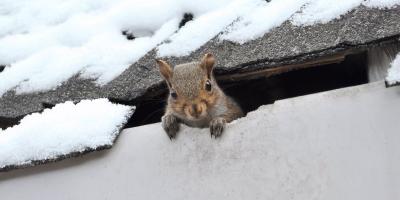Don't Bring Pests in With the Woodpile

You may already be looking forward to a toasty fire in the hearth this winter, but you’re not the only one. An often-overlooked hazard of indoor fires is the potential to bring in pests from the frigid outdoors – pests who, like you, would rather be inside where it’s warm.
What’s worse is the kinds of pests that wood piles attract; namely, the most destructive and expensive pests a homeowner may ever have to deal with – the aptly named wood-destroying insects.
What’s in Your Woodpile?
Outdoor wood piles are absolute breeding grounds for the following pests:
Termites: What most people think of when they hear “wood-destroying insects.” Termites can be identified by the trademark “mud tubes” they build.
Carpenter ants: Unfortunately, this kind of woodworking ant is of the destructive variety. Carpenter ants don’t actually eat the wood; instead, they bore holes into it in order to make their nests.
Wood borers: The emerald ash borer is one of the most destructive invasive species in North America. As its name suggests, it targets ash trees.
Powderpost beetles: This collection of several species of wood-destroying insects is second only to termites in terms of their destructive power and are named for the powdery sawdust they leave behind.
Any one or combination of those pests inside your home can result in costly structural damage, which will only worsen if the infestation goes unnoticed and untreated.
Prevent Woodpile Woes
There are a number of precautions you can take to minimize the chances of bringing in pests with your firewood, which start with where and how you build the woodpile itself.
- Never stack wood up against or near your house, any outbuildings or, for that matter, any trees. This is to limit easy access for these pests to move from the trees, to the wood pile, and ultimately to your home.
- Make sure you put a buffer in between wood and the dirt – don’t stack it straight on the ground. Wood directly above the dirt creates easy access for subterranean termites to access it because, as the name suggests, they live underground.
- Do not create a woodpile indoors – bring in only as much as you intend to burn immediately.
- Stack the woodpile in such a way that you can follow FIFO – first in, first out – that way, you never leave wood out to rot. Rotten wood won’t burn well, and becomes a much more attractive target for most wood-destroying insects.
Believe it or not, when the wood was harvested also matters. Trees felled in the spring and early summer are more likely to be infested with bugs, whose populations explode in the warm, humid air. Trees cut down toward the end of summer and into fall, however, benefit from the cooler, drier weather, making them less likely to have bugs.
It’s also important to let your firewood fully cure or dry before bringing it inside. Wet, still-green lumber is more likely to attract and sustain pests. And it should go without saying, but don’t ever spray wood you’re planning to burn with any kind of chemical. Burning it could release toxic fumes that could result in injury or even death.
With something as valuable as your home at stake, if you discover any of these wood-destroying insects you need to call a pest control professional immediately.
Did some wood-destroying pests already manage to sneak in? Now’s the time to call in the pest professionals. Give us a call today to take back your home.



